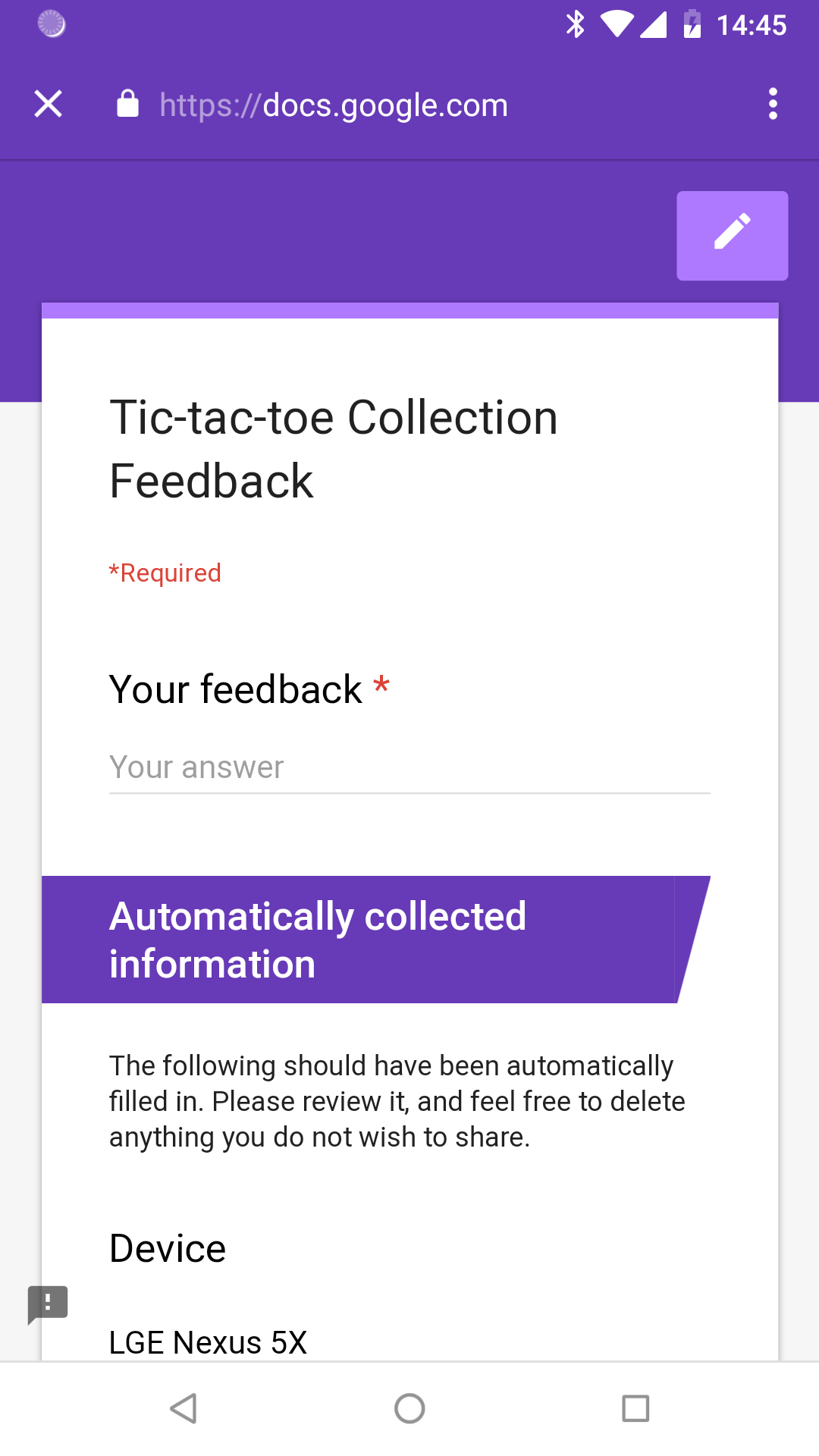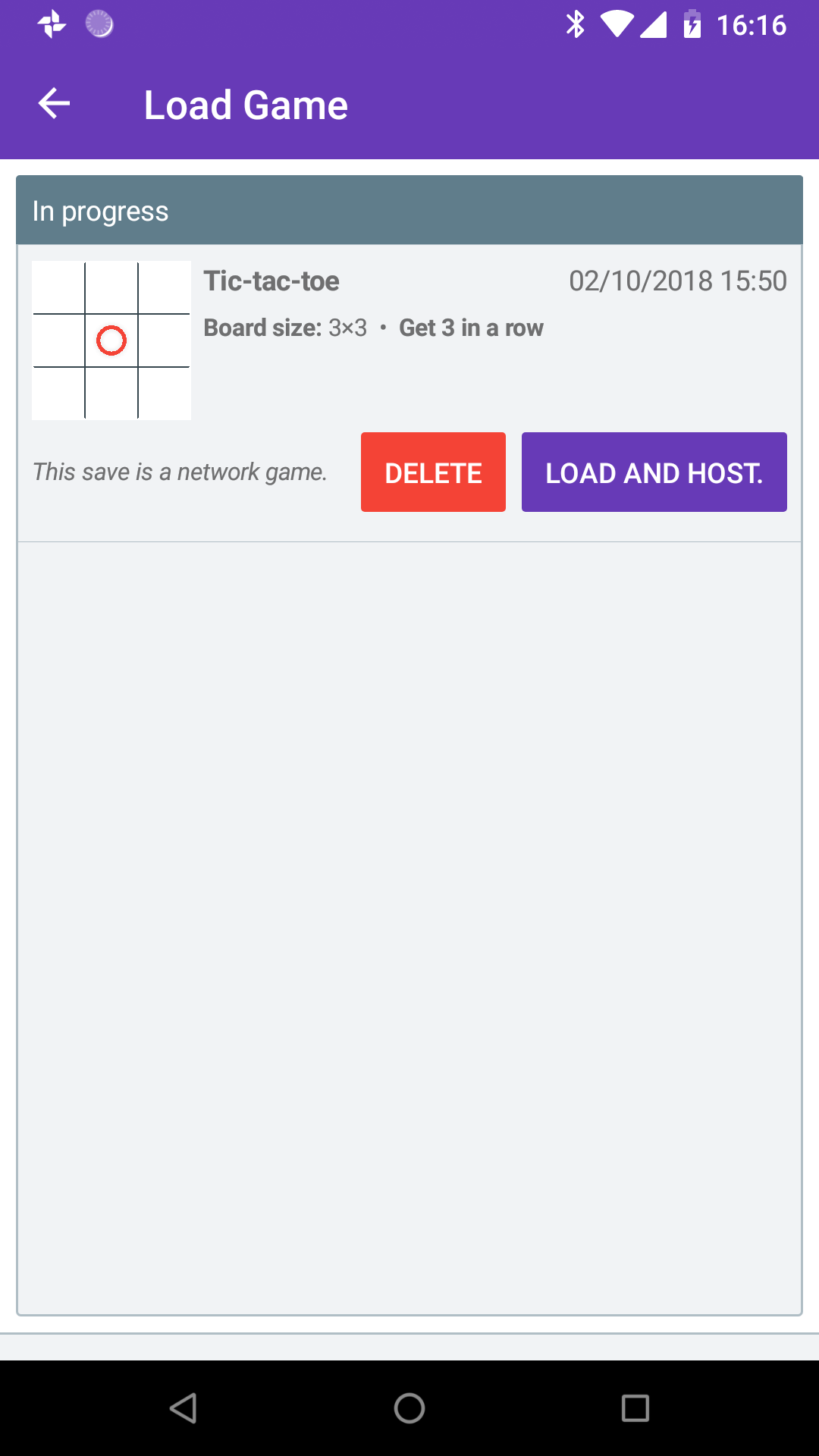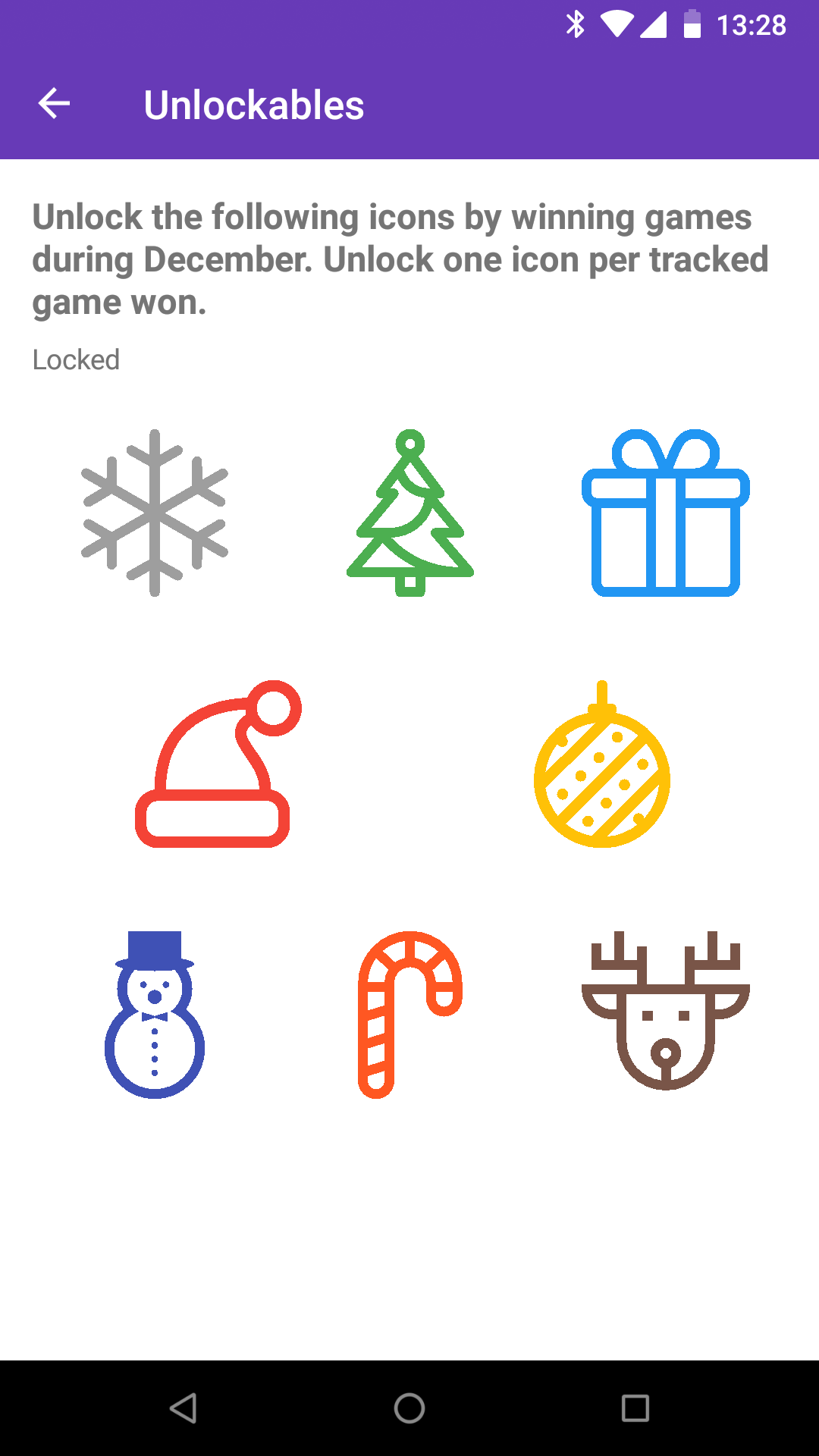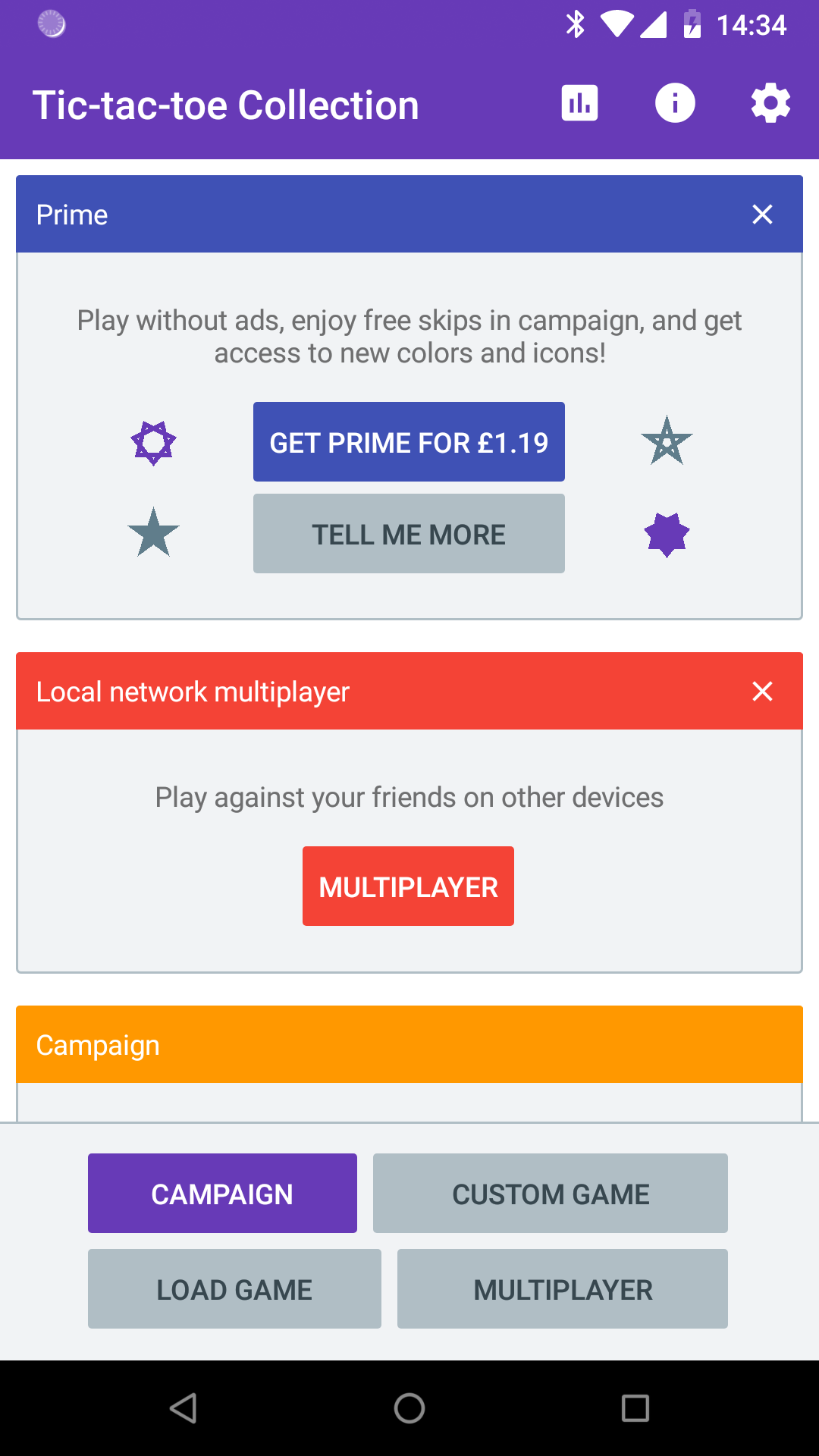- Fixed a crash that could happen because of the new pan and zoom code.
- Fixed some other minor issues that could make panning or zooming fail.
- Added a message to the main page if an update is available.
- Implemented the first part of zooming and panning to the game screen. As a result, new users will longer be able to skip Gomoku levels in campaign.
- Fix crash when trying to go to the multiplayer page.
- Make easy AI even easier.

Version 0.12.7 introduced a largely hidden feedback form (accessible from the release notes page, and small note on the local network multiplayer page).
0.13.3 brings an improved about page making the feedback form is now more visible, so I figured I would also make it more apparent here.
The feedback is gathered via a Google Form, and has some optional fields that will be auto-populated if you access it from the game.
Provide feedback here.
- Fix possible crash when exiting a network game.
- Fix issue with video ads being shown to Prime users.
- A new color for all users: <span style=“color: #FFEB3B; font-weight: bold”">YELLOW.
- Two new colors for Prime users: DEEP BLUE and BLUE GREY.
- Five new icons for all users: plus, square (outline and filled) and diamond (outline and filled).
- Four new icons for Prime users: five and seven pointed stars (both outline and filled).
- Added a news item for local multiplayer.
- Fixed release notes not appearin on first load.
- Fixed spectate mode crashing when trying to spectate a multiplayer game not yet started.
- Cleaned up how inactive games are handled in the multiplayer UI.

- Added Local network multiplayer.
- Cleaned up how player details are shown on game setup and in game.
- Improved consistency of many small bits of UI.
- Load game UI updated to make game options more discoverable.
- Moved game results on to the game screen,




